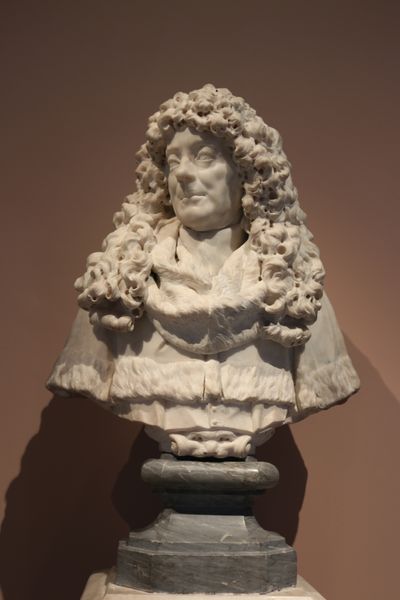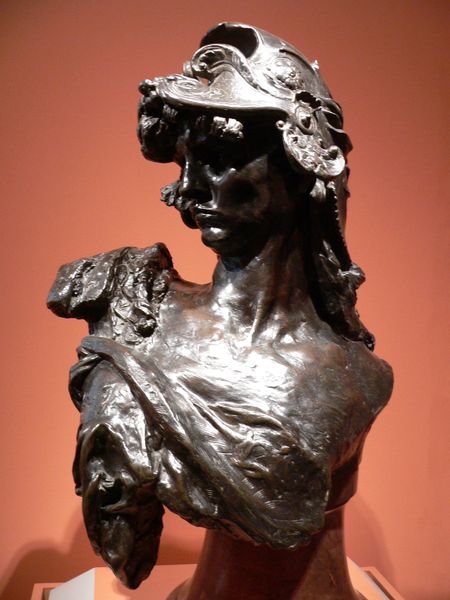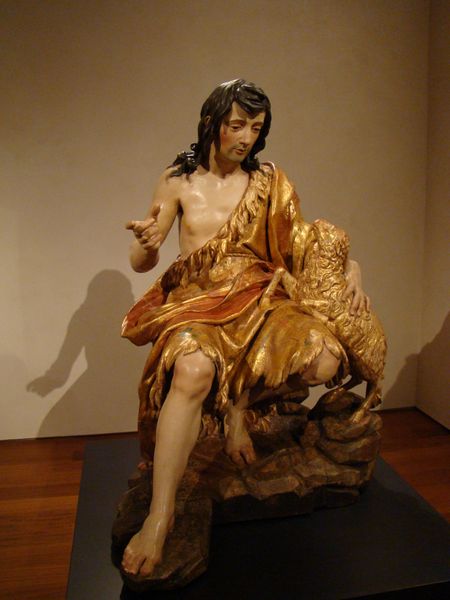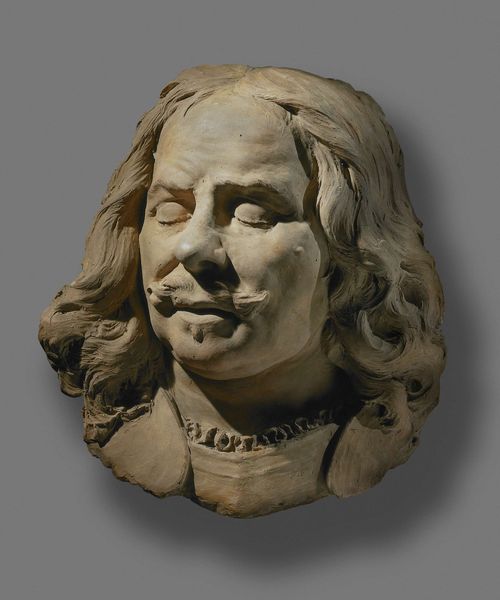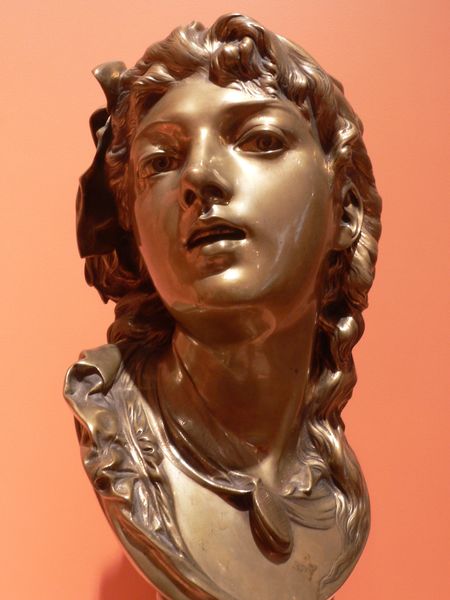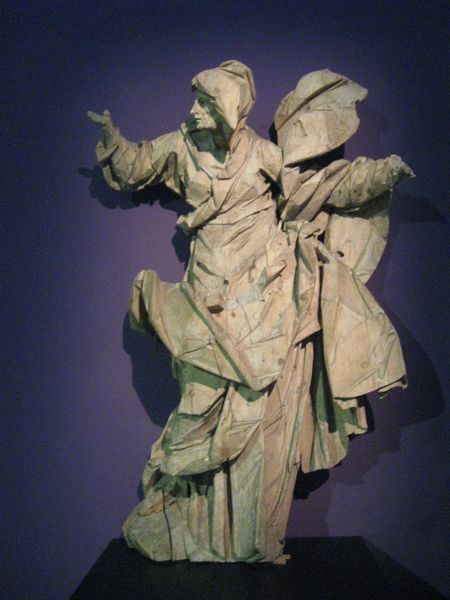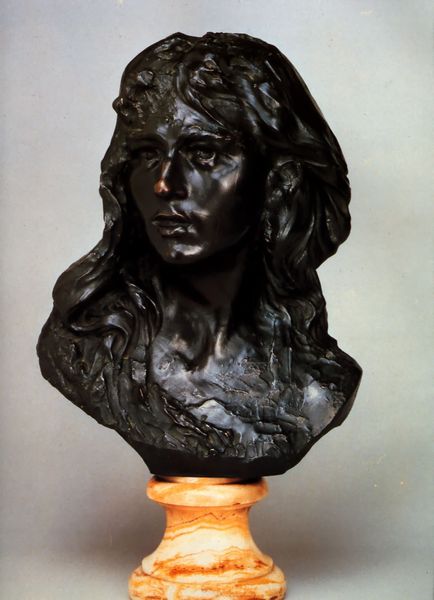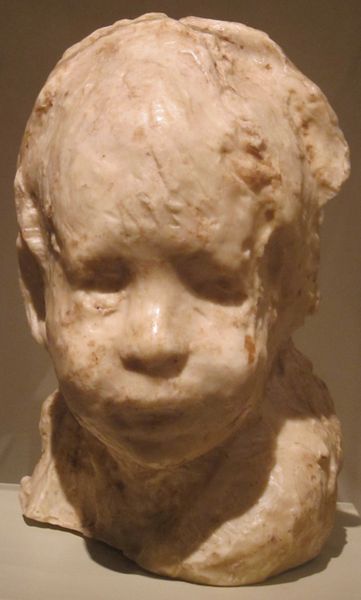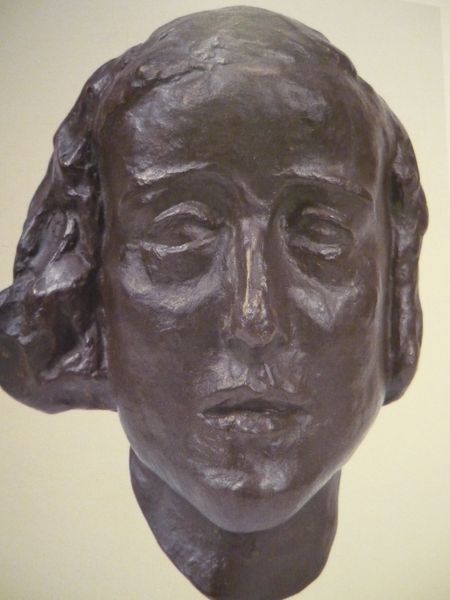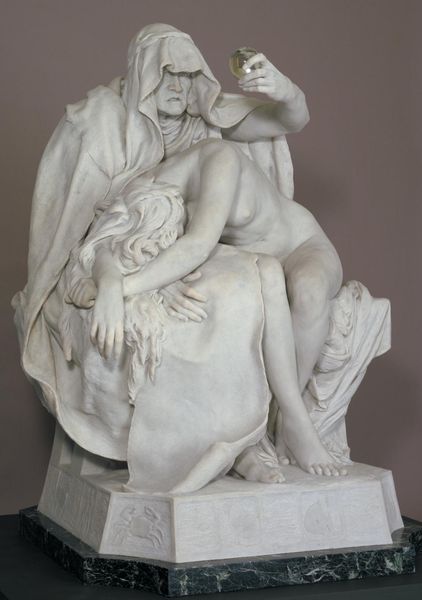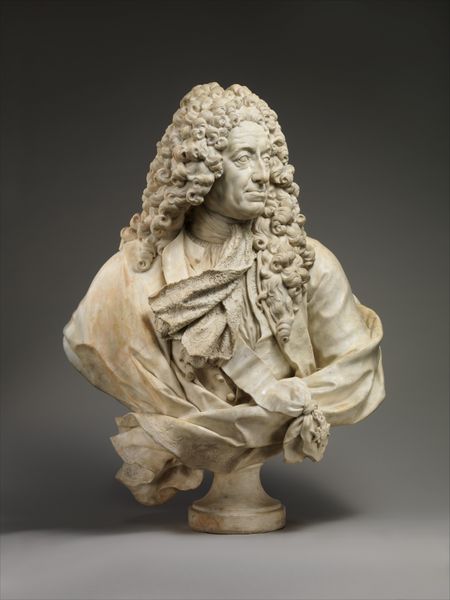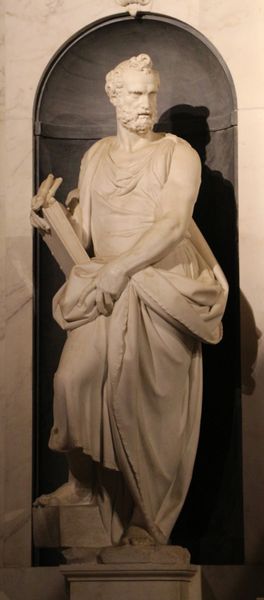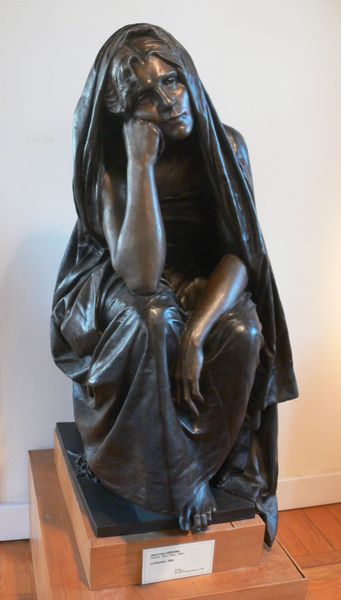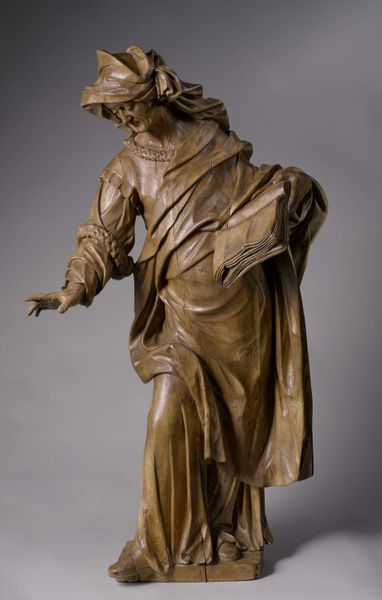
carving, sculpture, marble
#
portrait
#
neoclacissism
#
statue
#
carving
#
sculpture
#
sculpture
#
marble
#
statue
Copyright: Public domain
Curator: Standing before us is Jean-Antoine Houdon’s marble sculpture, "Portrait of Molière," created in 1781. Editor: The stark white of the marble immediately gives it this austere, almost intimidating presence. The scale makes you really confront the figure. Curator: Absolutely. Houdon was a master of capturing likeness, and the details of Molière's face—his expression, the way his hair falls—are rendered with incredible skill. The French court obviously had strong views about the craft behind royal portraiture. Editor: Precisely, Houdon's virtuosity in carving marble needs underlining, doesn't it? Marble wasn't just a stone, it was THE imperial material for creating powerful icons of the era. We can see how the choice of material influenced the reception of the statue, solidifying Molière's place within the canon of French literary greats. The choice speaks volumes about the values associated with the man and how that status could be literally sculpted into permanance. Curator: And let's consider Molière's legacy at the time this piece was commissioned. The figure of the playwright became really significant as France defined itself, its social norms, and its national language in relationship to that theatre. Houdon was commissioned by cultural institutions who very deliberately used images to communicate their messages to the world. Editor: The slightly open mouth and brow furrowing gives a fleeting sense of performance to what would otherwise have been a pretty unapproachable figure. It makes us think, what sort of character is the playwright trying to embody and convey? There’s this really interesting tension. Curator: Indeed. In the late 18th century, Molière's plays were being used to shape political and social discourse. A portrait like this served to reinforce his image as a cultural icon, legitimizing certain viewpoints and behaviors through art. Editor: Seeing it in this way allows us to understand that this work wasn’t produced in a vacuum and serves as a window into understanding its production and legacy. Curator: Examining his portrait underscores how artistic interpretation shapes historical narratives and perpetuates them for later audiences.
Comments
No comments
Be the first to comment and join the conversation on the ultimate creative platform.
